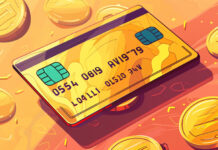For many individuals, the burden of debt can feel overwhelming, affecting their financial well-being and quality of life. However, with determination, discipline, and strategic planning, it’s possible to break free from the cycle of debt and achieve financial freedom. In this guide, we’ll explore practical strategies and actionable steps to help individuals get out of debt and reclaim control of their finances.
Assess Your Debt Situation
1. Compile a List of Debts: Start by gathering information on all your debts, including credit cards, loans, and any other outstanding balances. List the total amount owed, interest rates, minimum monthly payments, and due dates for each debt.
2. Calculate Your Total Debt: Once you have a comprehensive list of debts, calculate the total amount you owe. This will give you a clear understanding of the scope of your debt and serve as a baseline for creating a repayment plan.
Create a Budget
1. Track Your Expenses: Keep a detailed record of your monthly expenses, including necessities such as housing, utilities, groceries, transportation, and discretionary spending.
2. Identify Areas for Savings: Review your expenses to identify areas where you can cut back or reduce spending. This might involve dining out less frequently, canceling subscription services, or finding cheaper alternatives for everyday purchases.
3. Allocate Funds for Debt Repayment: Once you’ve identified potential savings, allocate a portion of your income towards debt repayment. Prioritize paying off high-interest debts first while making minimum payments on other debts.
Develop a Repayment Strategy
1. Snowball Method: With the snowball method, you focus on paying off the smallest debt first while making minimum payments on larger debts. Once the smallest debt is paid off, you roll the amount you were paying towards that debt into the next smallest debt, gradually increasing your payments until all debts are paid off.
2. Avalanche Method: The avalanche method involves prioritizing debts with the highest interest rates. Allocate extra funds towards the debt with the highest interest rate while making minimum payments on other debts. Once the highest-interest debt is paid off, move on to the next highest-interest debt until all debts are repaid.
3. Debt Consolidation: Consider consolidating multiple debts into a single loan with a lower interest rate. Debt consolidation can simplify repayment by combining multiple payments into one, potentially reducing overall interest costs.
Increase Your Income
1. Explore Additional Income Sources: Consider taking on a part-time job, freelancing, or selling unused items to generate extra income that can be put towards debt repayment.
2. Negotiate a Raise: If possible, negotiate a salary increase with your employer or seek out higher-paying job opportunities to boost your income potential.
3. Monetize Skills and Hobbies: Turn your hobbies or skills into a source of income by offering services or creating products that you can sell online or locally.
Seek Professional Assistance
1. Credit Counseling: Consider working with a reputable credit counseling agency to develop a personalized debt repayment plan and receive guidance on managing your finances.
2. Debt Settlement: If you’re struggling to make minimum payments on your debts, you may explore debt settlement options. Debt settlement involves negotiating with creditors to settle debts for less than the full amount owed.
3. Bankruptcy: Bankruptcy should be considered as a last resort option for individuals facing overwhelming debt and financial hardship. Consult with a bankruptcy attorney to understand the implications and determine if bankruptcy is the right solution for your situation.
Stay Committed and Persistent
1. Set Realistic Goals: Establish achievable goals for debt repayment and track your progress regularly. Celebrate milestones along the way to stay motivated and committed to your financial journey.
2. Practice Discipline: Stick to your budget, avoid unnecessary expenses, and resist the temptation to accumulate additional debt while working towards becoming debt-free.
3. Build Emergency Savings: Establish an emergency fund to cover unexpected expenses and avoid relying on credit cards or loans in case of emergencies.
Celebrate Your Success
1. Celebrate Milestones: Once you’ve successfully paid off a debt or reached a significant milestone in your debt repayment journey, take the time to celebrate your achievements.
2. Maintain Financial Discipline: After becoming debt-free, continue practicing good financial habits, such as budgeting, saving, and avoiding unnecessary debt, to maintain your newfound financial freedom.
3. Pay It Forward: Share your experiences and lessons learned with others who may be struggling with debt, offering support and encouragement to help them on their own journey to financial freedom.
Getting out of debt requires commitment, discipline, and perseverance, but the rewards of achieving financial freedom are immeasurable. By following the steps outlined in this guide and staying focused on your goals, you can overcome the challenges of debt and pave the way towards a brighter financial future. Remember, every step you take towards debt repayment brings you one step closer to realizing your dreams and aspirations.





















